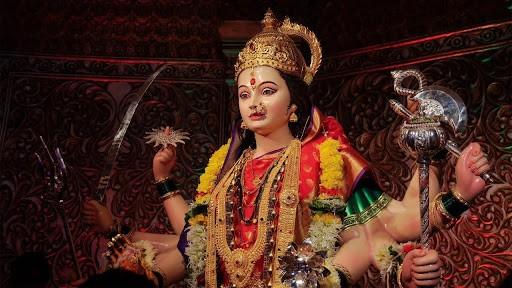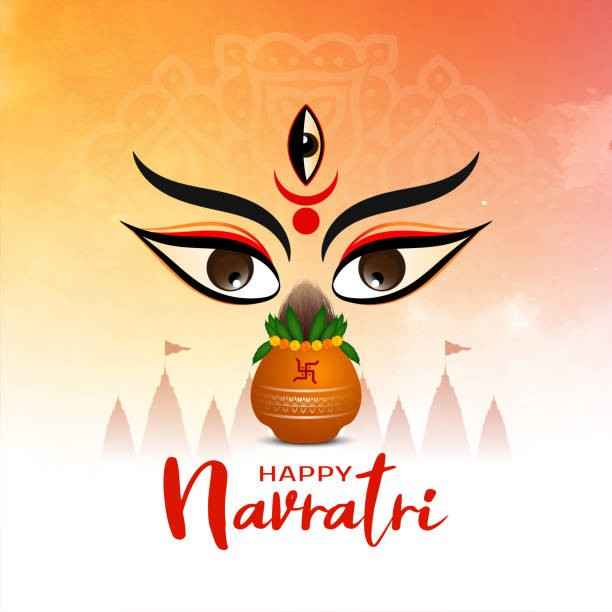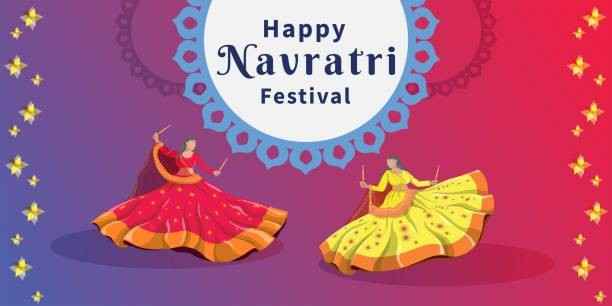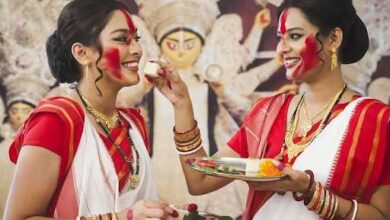Navratri 2025: Understanding the Practices, Significance, and Rituals across India
Navratri 2025 Dates, Puja Timings & Significance: Complete Guide

Indians have passionately held on to their cultural practices and religion despite modernity and the changes that come with it. Their culture is deeply rooted and influenced by religion. While, as a people, they practice different religions, the majority are devotees of the Hindu belief. Hinduism is not a new religion in India, and its origins go back thousands of years.
With Hinduism comes numerous festivals dedicated to celebrating and honoring their deities. Of the many festivals Indians celebrated this year, the Navratri 2025 is the most esteemed. And while their culture is rich in religious festivities, we will look into the significance of the Navratri festival. Different regions in India celebrate these festivals as part of their culture.
What is the Navratri Festival About?
This festival is marked and celebrated four times every year. Navratri is a religious festival dedicated to the worship of the Indian goddess Maa Durga. Hindu faithful mark this festival by performing several spiritual rituals.

The four times of celebration are given different names: Magha Gupta Navratri, Ashadha Gupta Navratri, Chaitra Navratri, and Shardiya Navratri. Nonetheless, the festival of Navratri in Hinduism refers to the nine days and nine nights honoring the goddess Maa Durga.
Magha Gupta Navratri Date and Significance
Devotees look for Durga’s blessings during this time, which starts on January 30, 2025. As the Navratri calendar begins, all Sadhaks and Tantriks secretly worship and honor Durga for nine days and nine nights.
Various spiritual practices, such as chanting, fasting, reciting shabar mantras, yoga, and meditation, are used by devotees to commemorate this religious event.
There are Puja rituals that Hindus must observe daily during the nine days of the Gupta Navratri. These rituals include:
- Taking a holy bath first thing in the morning
- Adorning clean traditional attire
- Participate in taking a wooden plank
- Lighting a diya with purified desi ghee in front of an idol of the goddess
- Durga devotees must decorate the idol with unique items, such as sindoor, a dupatta, and a tilak.
- As worship, devotees have to chant Vedic mantras seeking blessings and invoking Durga
- Those who can fast join the fast for the nine days of worshipping Durga.
Chaitra Navratri Date and Significance
Chaitra is a highly sacred and significant period in the worship of Durga, encompassing both religious and spiritual devotion. Unlike Gupta, believers from all over India publicly mark and celebrate Chaitra.
Hindu devotees observe Navratri, worshipping the goddess Durga and believing they’ll receive happiness and blessings. From the first day of Chaitra Navratri to the last day, devotees observe long fasts and night vigils to worship and welcome the presence of their beloved goddess. The people offered worship to each representation of Durga throughout the nine days.
Indians believe that Chaitra is the celebration of good over evil. The lore states that Durga defeated the demon Mahishasura at a time when several gods could not do so. Furga is said to have engaged in a historic battle for nine days and nine nights nd ultimately won against Mahishasura.
- Devotees partake in the nine-day fasting and praying
- Durga worshipers must perform Ghatasthapana to invoke her presence on the first day of the nine days of Chaitra
- Worship and lighting of diyas continue every day
- On the eighth day, also known as Ashtami, a special ritual is performed to honor the goddess form.
- On the ninth day of the Chaitra Navratri, celebrations break out as devotees mark the last day of the festival. On this day, they celebrate the birthday of Lord Rama, who is another form of Lord Vishnu. Hindus mark the day by practicing bhajans, processions, prayers, and fasting as they call on Lord Rama.

Ashadha Gupta Navratri Date and Significance
People across India observe Gupta Navratri in the months of Asadha and Magha. This Navratri phase begins on June 26, 2025, and it’s the second time people mark Gupta Navratri in honor of Maa Durga. Asadha is considered the most powerful period to invoke the spirit of Durga. Devotees worship the nine forms of Mhavidhya in purity for nine days and nine nights. Believers who practice Mantra and Tantra Sadhana observe nine-day fasts, during which no food or water is consumed. The following puja rituals characterize the nine days:
- The day must begin very early with a clean bath.
- The Idol of Durga is placed on a wooden plank to mark the beginning of the rituals.
- A coconut is placed inside a kalash filled with water and placed in front of Durga’s idol.
- The devotee practices Ghatasthapana before lighting a diya
- Offer beautiful hibiscus flowers, sweets, fresh and dry fruits to the idol
- Call upon Maa Durga by chanting the Vedic mantras
- Finally, seek blessings by reciting the goddess’s Saptashati.
Shardiya Navratri Date and Significance
Of the Navratri festivals, Shardiya Navratri is the most popular as devotees celebrate the victory of Durga. This period falls in the lunar month that typically falls between September and October. This auspicious occasion is marked by honoring all the puja rituals over nine days and nine nights.
The celebrations culminate on the tenth day, known as Dussehra, after the nine days of worship and prayers. According to the Navratri calendar, the Chaitra and the Shardiya are the most important of the Navratri festivals.
Each day of the Navratri festival has a distinct color dedicated to each form of the goddess. Women are often seen adorned in these colors as they merry and celebrate the victory of good over evil. Some of the rituals witnessed during the Shardiya Navratri festivities include:
- Devotees offer worship to the different forms of Durga through fasting and prayer
- Daily devotion with the lighting of incense and diyas to honor the goddess
- Joyful celebrations like Garba and Dandiya are held at night
- Idols of the goddess are placed in homes and temples
- Offerings of food, sweets, and flowers are brought before the idol
Dussehra
The Navratri festival ends with a pompous celebration called Dussehra. On this day, families and communities reflect on the battle and victory of righteousness over evil. Dussehra is held on the tenth day following Navratri. Women draw strength from the goddess Durga as she reminds them of the power of women.
On this day, the Hindu god Rama is also celebrated. His birthday is commemorated as a figure who stands as a reminder that good always wins over evil. Dussehra is marked by vibrant decorations throughout cities in India. Devotees offer prayers in temples as the day is marked in grandeur celebrations. A significant point in the celebration is the immersion of the goddess Durga in water as a form of farewell.
About Goddess Durga
Durga is highly revered in Hinduism. She is known as the warrior goddess, the true embodiment of divine feminine strength and power. In India, you will see her depicted as a woman sitting on a lion while holding weapons in her numerous arms. She is believed to be the goddess who protects humankind against evil.

Different Forms of Durga and Their Significance
a) Navratri Day 1
The first day of the Navratri festival is dedicated to the worship of Maa Shailputri. She is the first form of goddess Durga, known as the daughter of the mountains.
This is the form of Durga that provides devotees with strength. On this day, the color grey is worn to represent the balance between good and evil and the beginning of the destruction of evil.
b) Navratri Day 2
On this day, the color orange is exalted to represent energy and enthusiasm in battle. Devotees worship Maa Brahmacharini, who is said to be full of wisdom and immense knowledge. Brahmacharini is Durga’s form that her worshippers turn to when they need wisdom in challenging situations.
c) Navratri Day 3
The third day of the Navratri festival is all about Maa Chandraghanta, who is the goddess of beauty and bravery. As women wear white garments on this day and worship Durga, they embody the peace and calmness that this day represents. In the midst of the battle against evil, she remained pure, brave, and calm.
d) Navratri Day 4
On the fourth day, Maa Kushmanda is worshiped as she represents fertility and greatness. Devotees wear the color red to symbolize power, devotion, and the passion that consumed Durga in her victory against evil.
e) Navratri Day 5
The color royal blue represents wisdom and divine energy so everyone chooses to wear it. During this day people worship Maa Skandamata who is the mother of Lord Kartikeya. The goddess Skandamata serves as Durga’s manifestation which grants motherhood blessings to her followers.
f) Navratri Day 6
The sixth day of Navratri encourages people to maintain a positive attitude toward life. Yellow stands as the main theme color which represents knowledge along with happiness and positive energy.
The worship of Maa Katyayani takes place on this day because she represents bravery. She is the warrior goddess who defeated evil and brought peace to the entire human race.
g) Navratri Day 7
During the seventh day of Navratri people show respect to the powerful Durga who appears as Maa Kalratri. According to belief this goddess form brought destruction to all evil. Devotees choose green as their worship color to represent new beginnings and growth together with prosperity.
h) Navratri Day 8
People worship Goddess Mahagauri during the eighth day of Navratri. She embodies purity and serenity. Her associated color is peacock green which represents compassion. The people believe Durga manifests as Mahagauri to show compassion toward her followers.
i) Navratri Day 9
The final day of Navratri festival requires people to wear purple as their main color. The color represents both spiritual growth and strong determination. This day is dedicated to Maa Siddhidatri worship because she represents perfection and superpowers. Devotees believe she grants them wisdom together with success.
Conclusion
Navratri is a sacred time in the Hindu religion as devotees celebrate the victory of righteousness. This festival is born from the story of the goddess Durga. When no god could step forward and put an end to the evil Mahishasura, Durga bravely mounted a lion and marched forward. The battle lasted nine days and nine nights, culminating in a victory over Mahishasura. Her courage and love for the world are celebrated every year during the Navratri festival. As every year before, Navratri 2025 will honor the fierce goddess and her victory over evil.
FAQS about Navratri 2025
Q1. What is Navratri?
Navratri is a sacred Hindu celebration that is observed for nine days and nine nights. It is dedicated to the worship of Maa Durga in her nine different forms. This auspicious occasion is symbolic of the victory of good over evil.
Q2. What is the significance of Navratri celebrations?
Navratri represents the battle between Durga and the demon Mahishasura. It is a celebration of Durga’s victory over evil. Hence, it is known as the festival that celebrates the triumph of good over evil.
Q3. What rituals do Hindus observe during the festival of Navratri?
Navratri is marked by the lighting of diyas and incense and fasting and abstaining from some food items, alcohol, and more. Everyone participates in the night vigils held throughout the nine days of worship.
Q4. What colors do Hindus wear during Navratri?
Each day has a chosen color that people wear and a significance attached to it in honor of the goddess. These colors include grey, orange, white, red, royal blue, yellow, green, peacock green, and purple.
Q5. What does each day of Navratri signify?
On each day of the Navratri festival, prayers are dedicated to a different form of the goddess Durga. Each of her forms symbolizes different virtues and blessings bestowed on her faithful.
Q6. When is Vijaya Dasami celebrated?
Dussehra is another name for Vijaya Dasami, which is marked on the tenth day after Navratri. This day is typically marked by celebrations and feasts as devotees honor the triumph of good over evil.
Q7. What are Navratri dates in 2025?
Navratri 2025 dates are as follows: Chaitra Navratri from March 30 to April 7, Ashadha Gupt Navratri from June 26 to July 4 and Sharadiya Navratri from September 22 to October 2, the Vijayadashami of which will culminate with Vijayadashami.
Q8: What is the real date of Dussehra in 2025?
Dussehra (Vijayadashami) 2025 date is Thursday, October 2, 2025. Falling on the Dashami Tithi of Sharadiya Navratri, it celebrates the victory of Lord Rama over Ravana, implying the victory of good over evil.
Q9: What is the time of Durga Puja in 2025?
Durga Puja 2025 timing highlights:
Maha Ashtami (Sandhi Puja): Sept 29 4:31 PM to Sept 30 6:06 PM
Maha Navami Tithi: Sept 30 6:06 PM to Oct 1 7:01 PM
Vijaya Dashami (Visarjan Muhurat): Oct 2 2:15 PM–3:03 PM
Q10. What is the secret Navratri in 2025?
The secret Navratri in 2025 is Ashadha Gupt Navratri, which is celebrated from June 26 to July 4. This intense Navratri is for the Tantra sadhak, or practitioner, calling upon the Das Mahavidyas for awakening and purification, protection, boons, and more.
Q11: How many gupt Navratri 2025?
There are two Gupt Navratris (secret Navratris), which are observed in 2025: one in Magha (January–February) and the other in Ashadha (June 26–July 4). They are highly spiritual, dedicated to Tantra and Mahavidya worship.
Q12: When to break Navratri fast in 2025?
Sharadiya Navratri 2025: Parana For Sharadiya Navratri 2025, Parana (the time to break the fast) is from 08:31 to 13:48 on 1st October, while doing Parana on Navami Tithi would be preferable. To watch this is to experience purity of devotion and the proper end to the nine‑day devotions.
